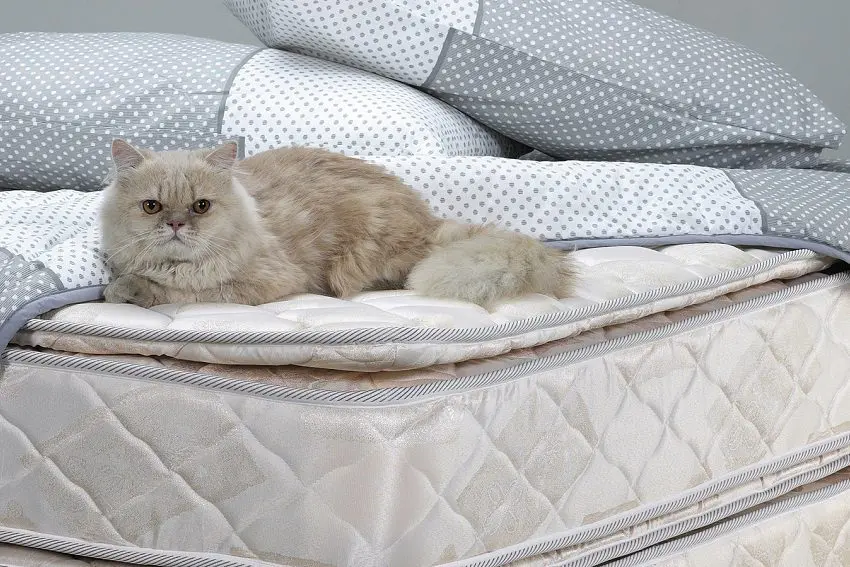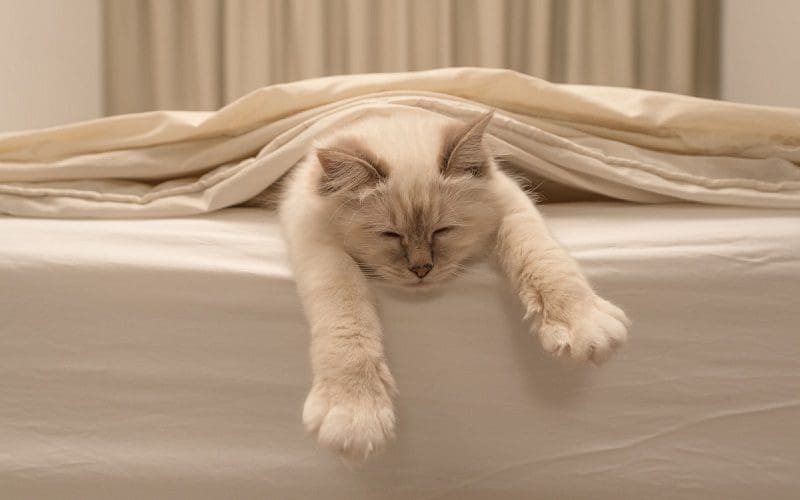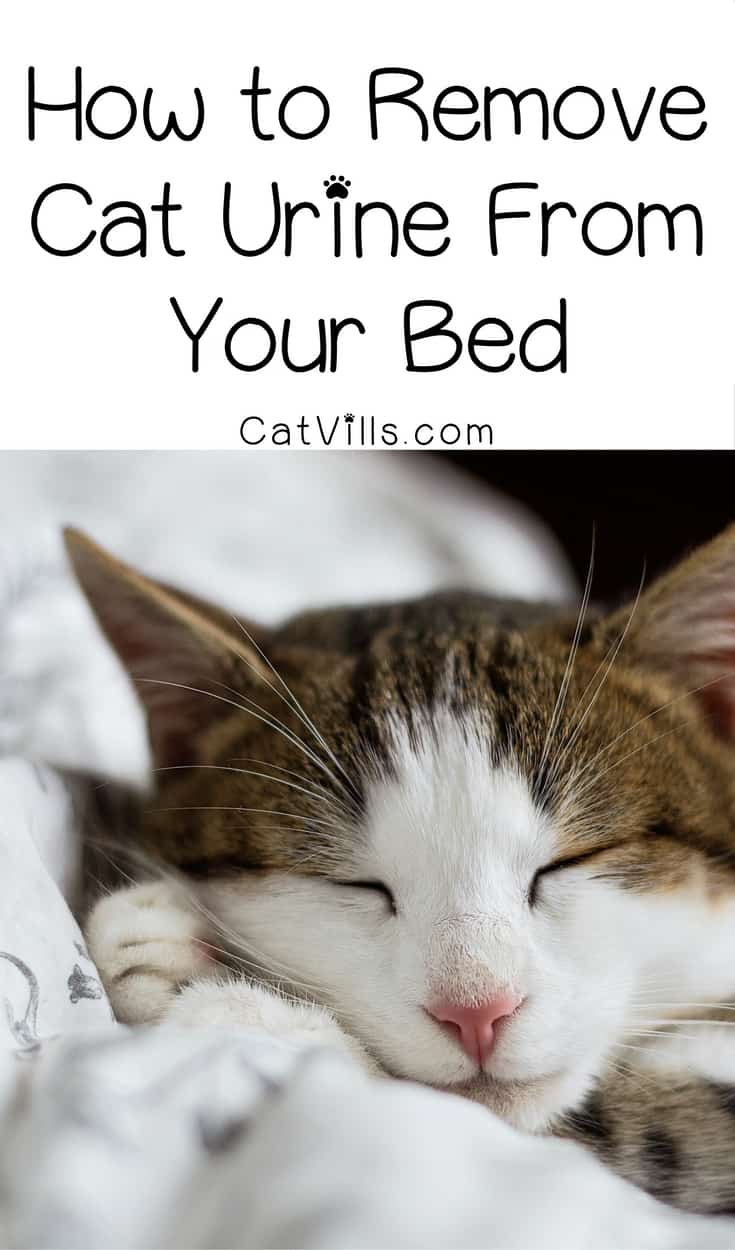Last Updated: 4 months ago
How to get cat pee out of mattress? Let’s face it—cat lover or not—there isn’t a more pungent, difficult-to-remove odor than that of cat urine.
It tends to permeate everything, and that’s exactly what it’s meant to do. Cats spray in order to get attention—other cats’ or yours—and with a smell that strong, it works!
Cat urine is heavily concentrated because their little bodies use water very efficiently, and there is not much waste.
Not only is it concentrated, but it tends to stay put, which is very effective if a cat is trying to spray trees or other vertical surfaces to mark its territory.
Helping with the marking process is felinine, an amino acid found only in cat urine that is a pheromone precursor.
To make matters worse, as bacteria break down uric acid, ammonia is released, providing much of that terrible smell.
The combination of the concentration, felinine, and ammonia makes cat urine extremely difficult to remove, especially from porous surfaces!
How to Get Cat Pee Out of Mattress?

One of our readers finds herself in the difficult situation of dealing with cat urine on the most porous surface there is—her bed.
She’s tried washing the pillows, blankets, and mattress, but the smell just won’t come out.
What should I do? Let’s start with the mattress. If the urine is still wet, blot as much as you can with paper towels.
For our reader, this isn’t the case, but it may be for you! Get as much of the liquid out as possible before moving on.
1. Mix A Solution
Mix a solution of 1 part white vinegar with 1 part warm water.
Depending on the size of your mess, you will either want to do this in a jug or a spray bottle.
- Pour or spray the solution on the areas of urine.
- Let it soak for 10 minutes, then blot with paper towels (or old towels you don’t much care about; I prefer them to paper towels).
2. Use Baking Soda
Sprinkle baking soda over the stain.
Use quite a bit; you will be surprised at how much urine the baking soda draws out!
3. Mix Another Solution
Mix a solution of a quarter cup of hydrogen peroxide or OxiClean with a small amount of warm water and a couple squirts of liquid dish detergent.
Pour it over the baking soda and scrub it in with a scrub brush or old toothbrush (one of my favorite cleaning tools!). Let this sit for 30 minutes.
4. Clean Off The Solution
Blot and clean off the solution.
Brush off as much of the solution as you can, then blot out the rest with a damp cloth.
5. Dry The Mattress
Allow the mattress to dry thoroughly.
It may take some time, but if you need to use the mattress before it’s dry, lay down a few towels between the mattress and the fitted sheet to absorb any remaining moisture.
As For The Bedding

Vinegar is again your best friend!
- Put your bedding through a cycle in your washing machine with 2 cups of distilled white vinegar (and hot water, so long as the colors won’t bleed).
- Then put them through another cycle with your normal laundry detergent.
- If you used OxiClean in step 4 for your mattress, throw in a scoop with the second run through the machine (with the normal laundry detergent) for good measure.
Voila! The cat urine odor is gone!
Wrap-Up
As we wrap up our guide on removing cat pee from a mattress, remember that swift action and the right techniques are crucial.
With diligence and the tips provided, you can bid farewell to unwanted odors and stains.
Your mattress can once again be a haven of comfort, ensuring a peaceful night’s sleep for both you and your feline companion. Sweet dreams await!
Did you try these tips for how to get rid of cat urine on your bed? Share your experiences below!
Resources:


Dr. Linda Simon MVB MRCVS is a locum veterinary surgeon who has worked in London for the past 8 years. She graduated top of her class in small animal medicine from UCD, Dublin. She is currently a member of the Royal College of Veterinary Surgeons. Linda is the resident vet for Woman magazine and a frequent contributor to People’s Friend Magazine, the Dogzone website, Vet Help Direct and Wag! Linda also writes content for the CVS veterinary group, Vetwriter and a number of other establishments.

Good lord I hope this works. Thank you for the advise and I will come back to let everyone know how it works!